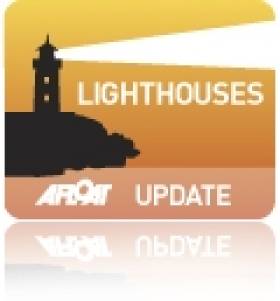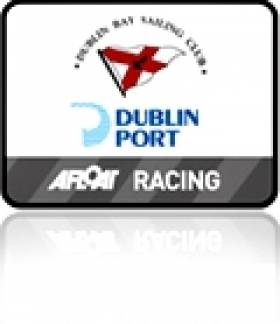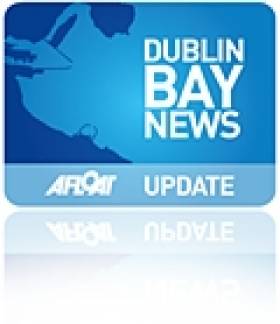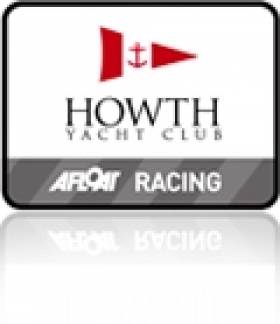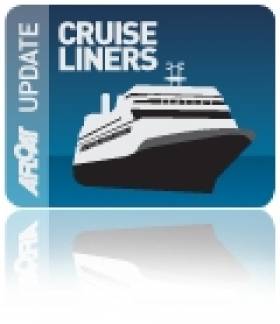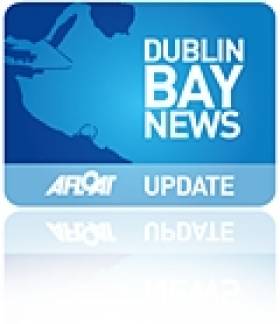Displaying items by tag: Dublin Bay
From Last Lightship to Last Lanby
The Commissioners of Irish Lights (CIL) withdrew the Codling Bank Lanby off Arklow on 24 July. This was the last Lanby to serve in Irish waters. The Lanby (Large Automated Navigation Buoy) is essentially a floating circular platform with a tower positioned centrally and fitted with a light to ward off potential dangers to shipping, writes Jehan Ashmore.
The Lanby was replaced with a Type 1 buoy which has a focal in excess of 5 metres and is fitted with a racon and Automatic Identification System (AIS).
Irish Lights aids to navigation tender, ILV Granuaile towed the former Codling Lanby to Dublin. The Lanby was hoisted out of the water and remains high and dry on the quayside awaiting demolition by the Hammond Lane Company. This final Lanby completes the withdrawal of Major Floating Aids to Navigation (MFAs) throughout Irish waters.
Lanbys were first introduced in the 1960s as replacements for lightships on certain stations. The ALF Gannet, the last Irish lightship, which was converted in the mid-1980's into an Automatic Light-Float (ALF) was withdrawn from the South Rock station off Portavogie in February 2009. The ALF Gannet was towed to Dun Laoghaire and laid-up at Carlisle Pier. Earlier this year ALF Gannet was sold and towed to new owners in the UK.
With modern navigating systems coupled with the amount of traffic and the degree of risk, CIL made the decision to withdraw the MFAs and replace them with Type 1 buoys.
The work of maintaining navigational aids is conducted at CIL's joint marine depot and head-quarters at Dun Laoghaire, which was built in 2008. A marine-depot facility did exist previously at the same site while administrative offices were located in Pembroke Street, Dublin.
In June, CIL celebrated its 200th year since establishment in 1810. The authority is entrusted to maintain, service and update all aids to navigation around the entire coastline of Ireland, providing a vital and invaluable service to mariners.
Assides the use of the tender, ILV Granuaile, Irish Lights also operate the tug-buoy tender, Puffin, also based at Dun Laoghaire.

The Codling LANBY at Irish Lights headquarters, Dun Laoghaire in 2009 with tender ILV Granuaile. Photo: Jehan Ashmore/ShipSNAPS
Gung Ho Wins it in DBSC races
BENETEAU 31.7 - 1. Prospect (Chris Johnston), 2. Violet Flame (B.Murphy/L.Osbourne), 3. Thirty Something (Gerry Jones et al)
BENETEAU 31.7 Echo- 1. Violet Flame (B.Murphy/L.Osbourne), 2. Kernach (Eoin O'Driscoll), 3. Extremity (Paul D'Alton)
CRUISERS 0 Echo - 1. WOW (George Sisk), 2. Tsunami (Vincent Farrell)
CRUISERS 0 - 1. WOW (George Sisk), 2. Tsunami (Vincent Farrell)
CRUISERS 1 Echo - 1. Jetstream (Peter Redden), 2. Aztec 3 (Peter Beamish), 3. Something Else (J.Hall et al)
CRUISERS 1 - 1. Joker 11 (John Maybury), 2. Jetstream (Peter Redden), 3. Aztec 3 (Peter Beamish)
CRUISERS 2 Echo - 1. Bendemeer (Gerald Kinsella), 2. Cor Baby (Keith Kiernan et al), 3. Red Rhum (J Nicholson)
CRUISERS 2 - 1. Jawesome 11 (V.Kennedy/M.Dyke), 2. Bendemeer (Gerald Kinsella), 3. Red Rhum (J Nicholson)
CRUISERS 3 Echo - 1. Carrabeg (D.Martin/R.Deasy), 2. Saki (Paget McCormack et al), 3. Gung Ho (G & S O'Shea)
CRUISERS 3 - 1. Gung Ho (G & S O'Shea), 2. Asterix (J.Counihan/F.Meredith), 3. Supernova (K.Lawless et al)
CRUISERS 4 - 1. Rascal (K.Burke/S.Milner), 2. Maranda (Myles Kelly)
DRAGON Race 1- 1. Diva (R.Johnson/R.Goodbody), 2. Phantom (D.Williams/P.Bowring), 3. Susele (Michael Halpenny)
DRAGON Race 2- 1. Diva (R.Johnson/R.Goodbody), 2. Zinzan (Daniel O'Connor et al), 3. Phantom (D.Williams/P.Bowring)
DRAGON Race 3- 1. Diva (R.Johnson/R.Goodbody), 2. Zinzan (Daniel O'Connor et al), 3. Susele (Michael Halpenny)
FIREBALL Race 1- 1. Elevation (N.Colin/M.Casey), 2. Licence to Thrill (Louis Smyth)
FIREBALL Race 2- 1. Licence to Thrill (Louis Smyth), 2. Elevation (N.Colin/M.Casey)
FLYING FIFTEEN Race 1- 1. Kooigjug (K Dumpleton), 2. Hy5ive (D & S Gorman), 3. Gekko (S & P Nolan)
FLYING FIFTEEN Race 2- 1. Kooigjug (K Dumpleton), 2. Snow White (Frank Burgess), 3. Hy5ive (D & S Gorman)
GLEN - 1. Glenluce (D & R O'Connor), 2. Glenshesk (L.Faulkner et al), 3. Pterodactyl (R & D McCaffrey)
IDRA 14 FOOT Race 1- 1. Dunmoanin (Frank Hamilton), 2. Sapphire (Lorcan O'Sullivan), 3. Squalls (Stephen Harrison)
IDRA 14 FOOT Race 1- 1. Dunmoanin (Frank Hamilton), 2. Sapphire (Lorcan O'Sullivan)
RUFFIAN 23 - 1. Alias (D.Meeke/M.McCarthy), 2. Ruffles (Michael Cutliffe), 3. Ruff N Ready (Ann Kirwan et al)
SHIPMAN - 1. Jo Slim (J.Clarke et al), 2. Euphanzel lll (Louis McSherry et al), 3. Curraglas (John Masterson)
SIGMA 33 - 1. Rupert (R.Lovegrove/P.Varian), 2. White Mischief (Timothy Goodbody), 3. Gwili Two (D.Clarke/P.Maguire)
SQUIB Race 1- 1. Anemos (Pete & Ann Evans), 2. Femme Fatale (Joe O'Byrne), 3. Kookaburra (P & M Dee)
SQUIB Race 2- 1. Femme Fatale (Joe O'Byrne), 2. Nimble (Brian O'Hare), 3. Perfection (Jill Fleming)
WHITE SAIL CRUISERS Echo - 1. Finnegans Wake (T.Rowlands et al), 2. Coumeenole (Bill Kavanagh), 3. Calypso (Howard Knott)
WHITE SAIL CRUISERS - 1. Act Two (Michael O'Leary et al), 2. Calypso (Howard Knott), 3. Windshift (R O'Flynn et al)
Leila Leads Howth Yacht Club's 17 National Champs
HOWTH YACHT CLUB. 17 FOOTER CHAMPS 07/08/2010 17 Footer SCRATCH: 1, Leila R Cooper (12.00); 2, Rita Lynch/Curley (14.00); 3, Isobel B & C Turvey (14.00); 4, Pauline O'Doherty/Ryan (15.00); 5, Aura I Malcolm (16.00); 17 Footer ECHO: 1, Pauline O'Doherty/Ryan (11.00); 2, Isobel B & C Turvey (12.50); 3, Leila R Cooper (14.50); 4, Aura I Malcolm (17.00); 5, Echo B & H Lynch (17.00)
A ship's pass dated 1687, signed by King James II and Samuel Pepys, which was acquired by the Dublin Port & Docks board in 1924, was presented to the National Library of Ireland today by Enda Connellan, CEO, Dublin Port Company who noted that "Dublin Port Company is delighted to present this interesting and rare historical document to the National Library of Ireland. This will ensure that it is appropriately conserved and displayed. In its new home it will also be more accessible to the public."
The pass is one of the few known examples of 17th century ships' passes in the world, with others held at the National Archives in Kew, London and at the National Maritime Museum in Greenwich.
The example presented to the National Library of Ireland was designed to provide passage for the merchant vessel the Mary of Cork, free from interference by English warships or warships belonging to states maintaining diplomatic relations with England.
The vessel left Dublin port in late 1687, bound for the Canary Islands. At the time, the Canary Islands were major exporters of sugar and Malvasia, a fortified white wine which travelled well and was extremely popular in Britain. The Mary of Cork may have been trading in such foodstuffs, in return for products such as salted Irish beef.
The vessel was manned by a crew of five and captained by Zachary Peebuchet.
The Mary of Cork ship's pass was issued at the Court of Whitehall on 29 September 1687 and was signed by King James II (Lord High Admiral 1685-1688) and Samuel Pepys (in his capacity as Secretary to the Admiralty). On 18 April 1688, the ship's pass was returned to Ireland, where it was entered into the registry of the High Court of Admiralty of Ireland by Thomas Williamson. It was acquired by the Dublin Port & Docks Board in 1924, and will soon be on display in the National Library's Department of Manuscripts.
Vintage Howth 17 Champs Get Underway This Evening
The Howth 17 National Championships takes place at Howth Yacht Club tomorrow. Racing commences this evening (Friday) at 7pm with a course selected from the East Pier race card and then on Saturday there will be a Windward / Leeward courses set.
Shannagh Wins Dublin Bay Ruffian Race
BENETEAU 31.7 Echo- 1. Kernach (Eoin O'Driscoll), 2. Levana (Jean Mitton), 3. Fiddly Bits (Kevin Byrne et al)
BENETEAU 31.7 - 1. Levana (Jean Mitton), 2. Prospect (Chris Johnston), 3. Levante (B.Leyden/M.Leahy)
CRUISERS 0 Echo - 1. Tsunami (Vincent Farrell), 2. Tiamat (Tim Costello), 3. Lively Lady (Derek Martin)
CRUISERS 0 - 1. WOW (George Sisk), 2. Tiamat (Tim Costello), 3. Tsunami (Vincent Farrell)
CRUISERS 1 Echo - 1. Team Windmill (Andrew Sarratt), 2. Joker 11 (John Maybury), 3. Jetstream (Peter Redden)
CRUISERS 1 - 1. Team Windmill (Andrew Sarratt), 2. Joker 11 (John Maybury), 3. Jalapeno (Dermod Baker et al)
CRUISERS 2 Echo - 1. Red Rhum (J Nicholson), 2. Bendemeer (Gerald Kinsella), 3. Dick Dastardly (B.Cusack et al)
CRUISERS 2 - 1. Red Rhum (J Nicholson), 2. Dick Dastardly (B.Cusack et al), 3. Jawesome 11 (V.Kennedy/M.Dyke)
CRUISERS 3 - 1. Supernova (K.Lawless et al), 2. Cries of Passion (Bryan Maguire), 3. Two Step (Ross Doyle)
CRUISERS 3 Echo - 1. Syzrgy (Rowan Fogarty), 2. Papytoo (M.Walsh/F.Guilfoyle), 3. Hyflyer (John Barnard)
DRAGON - 1. Susele (Michael Halpenny), 2. Phantom (D.Williams/P.Bowring), 3. Zu (P.Dee et al)
FLYING FIFTEEN - 1. Flyer (Niall Coleman), 2. Kooigjug (K Dumpleton), 3. Fifty Somethings (David Mulvin)
GLEN - 1. Pterodactyl (R & D McCaffrey), 2. Glencree (J.Bligh/H.Roche), 3. Glenmarissa (F.Elmes/W.Higgins)
RUFFIAN 23 - 1. Shannagh (S.Gill/P.MacDiarmada), 2. Ruffles (Michael Cutliffe), 3. Ruff Nuff (D & C Mitchell)
SB3s - 1. Design Security (Colin Galavan), 2. Flutter (Andrew Algeo), 3. Alert Packaging (Justin Burke)
SHIPMAN - 1. Whiterock (Henry Robinson), 2. Curraglas (John Masterson), 3. Viking (Brian Glynn et al)
SIGMA 33 - 1. White Mischief (Timothy Goodbody), 2. Rupert (R.Lovegrove/P.Varian), 3. Popje (Ted McCourt)
SQUIB - 1. Anemos (Pete & Ann Evans), 2. Kookaburra (P & M Dee), 3. Ladybird (M.Muldoon/B.Stevens)
WHITE SAIL CRUISERS Echo - 1. Coumeenole (Bill Kavanagh), 2. Arwen (Philip O'Dwyer), 3. Calypso (Howard Knott)
WHITE SAIL CRUISERS - 1. Arwen (Philip O'Dwyer), 2. Calypso (Howard Knott), 3. Act Two (Michael O'Leary et al)
'The World' Arrives on Dublin Bay! Pics Here!
The World, a 644 foot ship, owned by its residents arrived at the Poolbeg lighthouse on Dublin bay yesterday afternoon (Wednesday, August 4 2010) for a four day stop over in Dublin. The residents, from about 40 different countries, live on board as it slowly circumnavigates the globe. Arrival photos below:




'Crazy Horse' Romps Home in IRC 1
HOWTH YACHT CLUB. WEDNESDAY SERIES 3 (RACE) 04/08/2010 Class 1 IRC: 1, Crazy Horse Reilly/Chambers; 2, Tiger Hughes/Harris; 3, Equinox R McDonald; Class 1 HPH: 1, Trinculo M Fleming; 2, Crazy Horse Reilly/Chambers; 3, Tiger Hughes/Harris; Class 2 IRC: 1, Indigo Eadie/Ritchie; 2, Dux A Gore-Grimes; 3, Toughnut D Skehan; Class 2 HPH: 1, Indigo Eadie/Ritchie; 2, Toughnut D Skehan; 3, Sunburn I Byrne; Class 3 IRC: 1, Alliance V Gaffney; 2, Starlet Bourke/Others; 3, Gecko K Darmody; Class 3 HPH: 1, Rossinver C Scott; 2, Helly Hunter L McMurtry; 3, Drumbeat F & F Magann; White Sails HPH: 1, Sandpiper of Howth A Knowles; 2, Fanatix R Fanning; 3, Brazen Hussey Barry/Stirling; White Sails IRC: 1, Fanatix R Fanning; 2, Voyager J Carton; 3, Force Five R & J McAllister
'The World' Arrives into Dublin Bay
After an afternoon arrival in Dublin Port (today) on 4th August, The World, the first ocean-going luxury resort vessel is to stay in the capital for a four-day stay, writes Jehan Ashmore.
The World is not a conventional cruiseship, but is a unique concept inthat passengers can have the ultimate lifestyle experience of stayingonboard as residents, living in their own ultra-luxury privatepenthouse suites.
There are 165 private residences onboard the eight-year vessel. Theluxurious two and three bedroom residences are fully-furnished,complete with a living and diningroom area, kitchen, bathroom andverandah. The average occupancy of residents and guest at any onetime, varies between 150-200 people.
As of 2006, all the residential 'homes' were sold. Like any privatecommunity, there are opportunities to purchase apartments that areavailable for re-sale. Guests can also take a holiday by renting aresidence from a selection of units.
Facilities include several small restaurants, a theatre, library,delicatessen. Leisure activities feature a health spa and two swimmingpools and a stern-mounted retractable marina-deck. On the top-deckthere is a full-sized tennis court, a putting green with authenticgrass and driving range. Should the golf balls career off deck andplonk in the ocean, the balls are bio-degradable and dissolve within96 hours.
The 43,524gt vessel had arrived overnight from Cardiff and is dockedclose to the East-Link toll bridge. Passing motorists and pedestriansalike will have an opportunity to see The World until this Saturday (7August).
Notably the nearby attraction of the new Dublin Wheel, at the PointVillage provides an excellent venue to take views of The World andDublin's Fair City. The floating residency departs Dublin early onSunday morning to dock at Cobh the next day for three-days (9-11August).
The Norwegian built vessel, completed by Fosen Mek, Rissa in 2002,made a first visit to Dublin in that same year. It was during thoseheady boom-years, that the largest penthouse suite covering over3,220sq ft cost US$ 6.8m.
The ethos of living onboard while seeing the World on a continouscruising mode, was the concept of The World's founder, Knut Klosterjunior. Kloster established ResidenSea which originally intended toorder a 85,000 gross tonnes vessel but this was radically scaled downdue to customer demand.
In September, The World sails to Greenland for a ten day expedition.After that the vessel heads onto North America with Christmas 2010devoted to exploring Antartica.
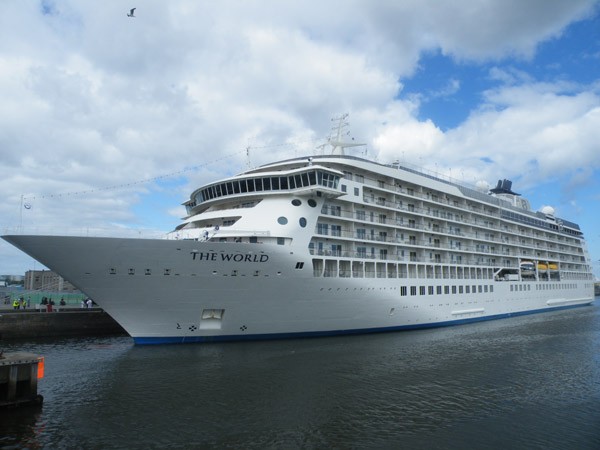
The World moored alongside North Wall Quay Extension, Dublin. Photo Jehan Ashmore/ShipSNAPS
Wing Sail Craft Pays a Visit to Dun Laoghaire
It was plane sailing when Larinka berthed at the town marina in Dun Laoghaire this afternoon. The unusual sight of a winged sail jutting above the breakwater made her an obvious target for boating folk. The interesting vessel is the last of four Zephyr 43 Walker Wingsail tris designed by John Walker and built in the Royal Naval Dockyard in Davenport Plymouth. Built in 1991 the boat has a cruising speed of eight knots and a top speed of 14. Photo from Dun Laoghaire today and a youtube video below:

Plane Sailing: Larinka is berthed in Dun Laoghaire marina


























